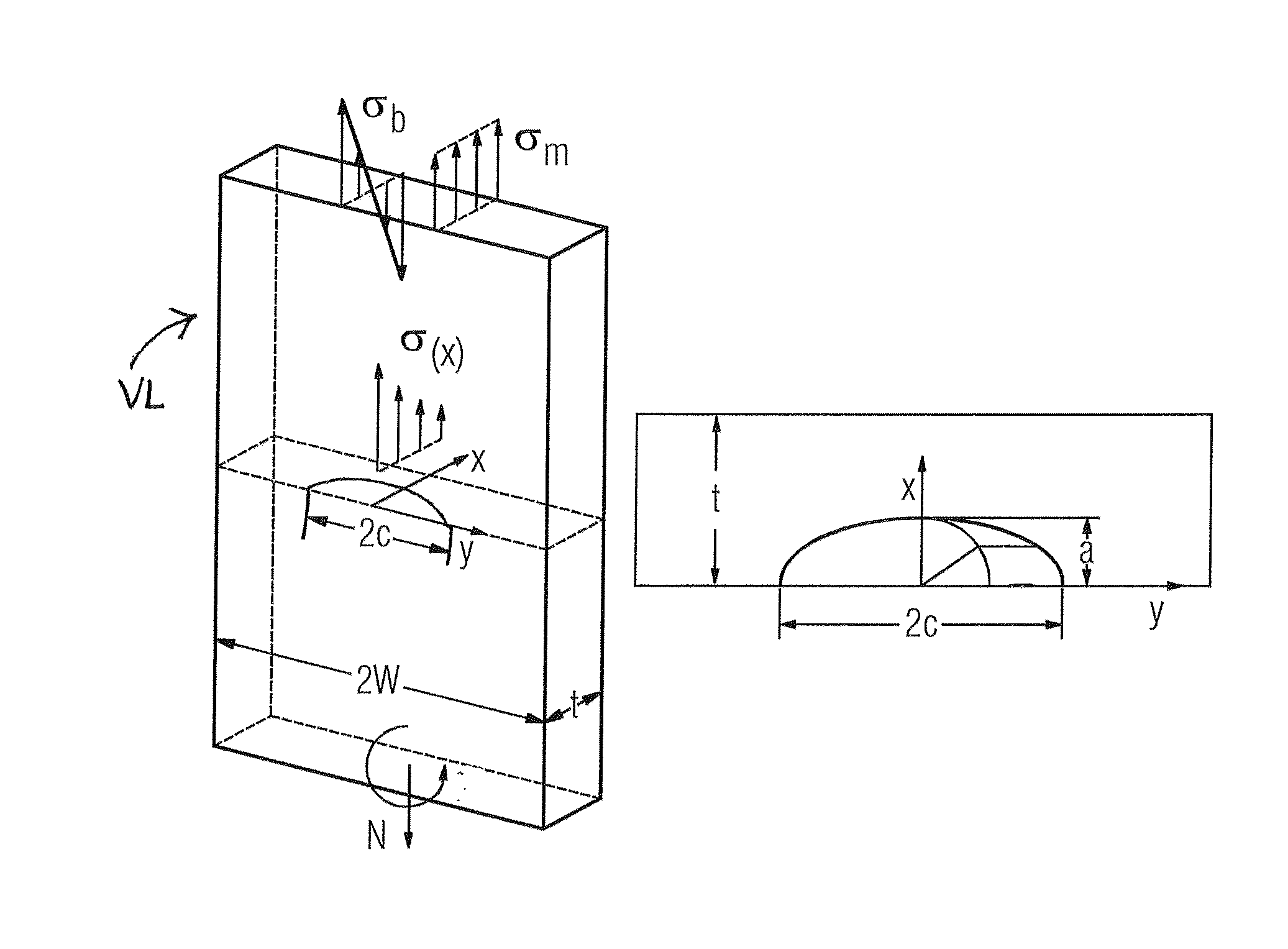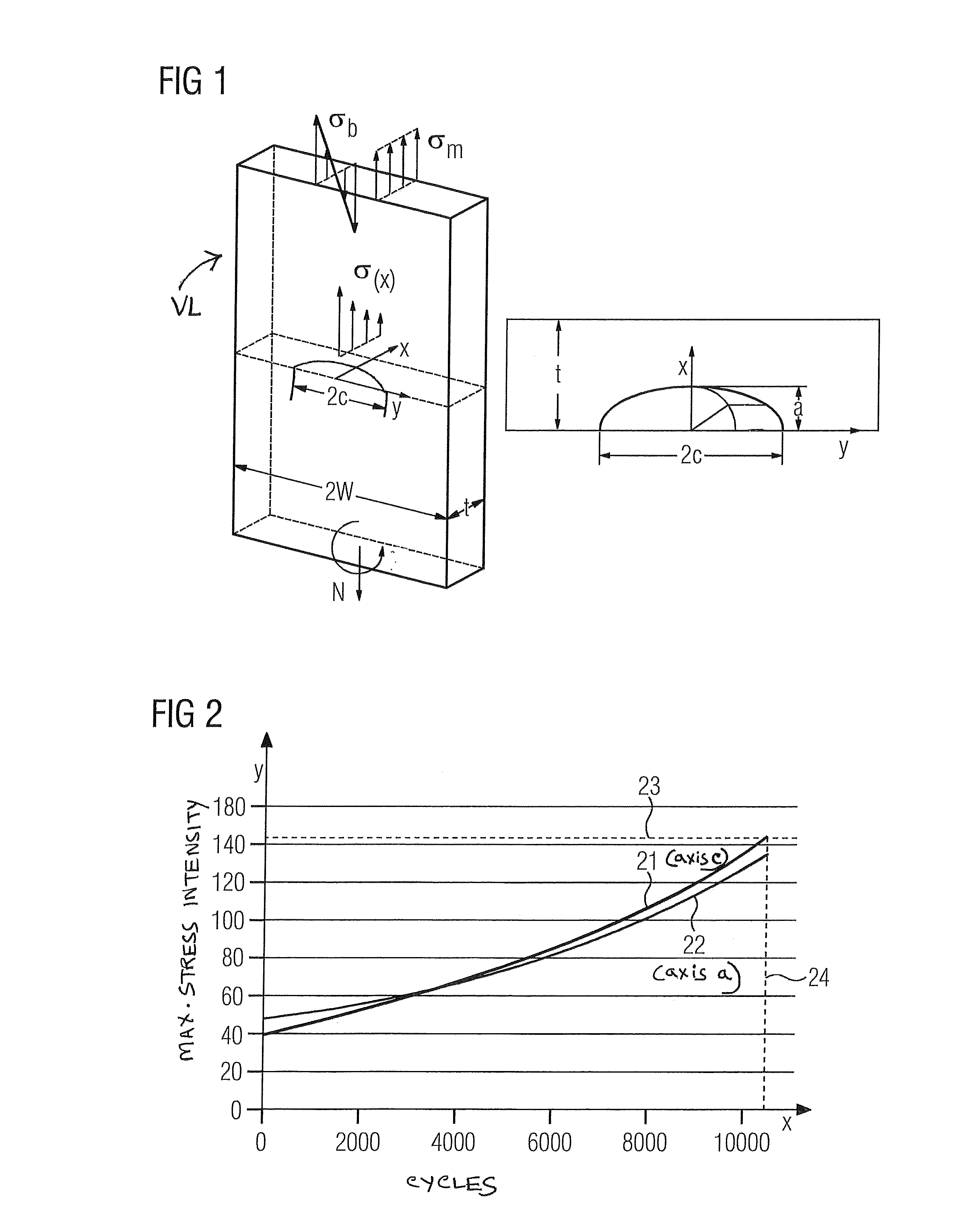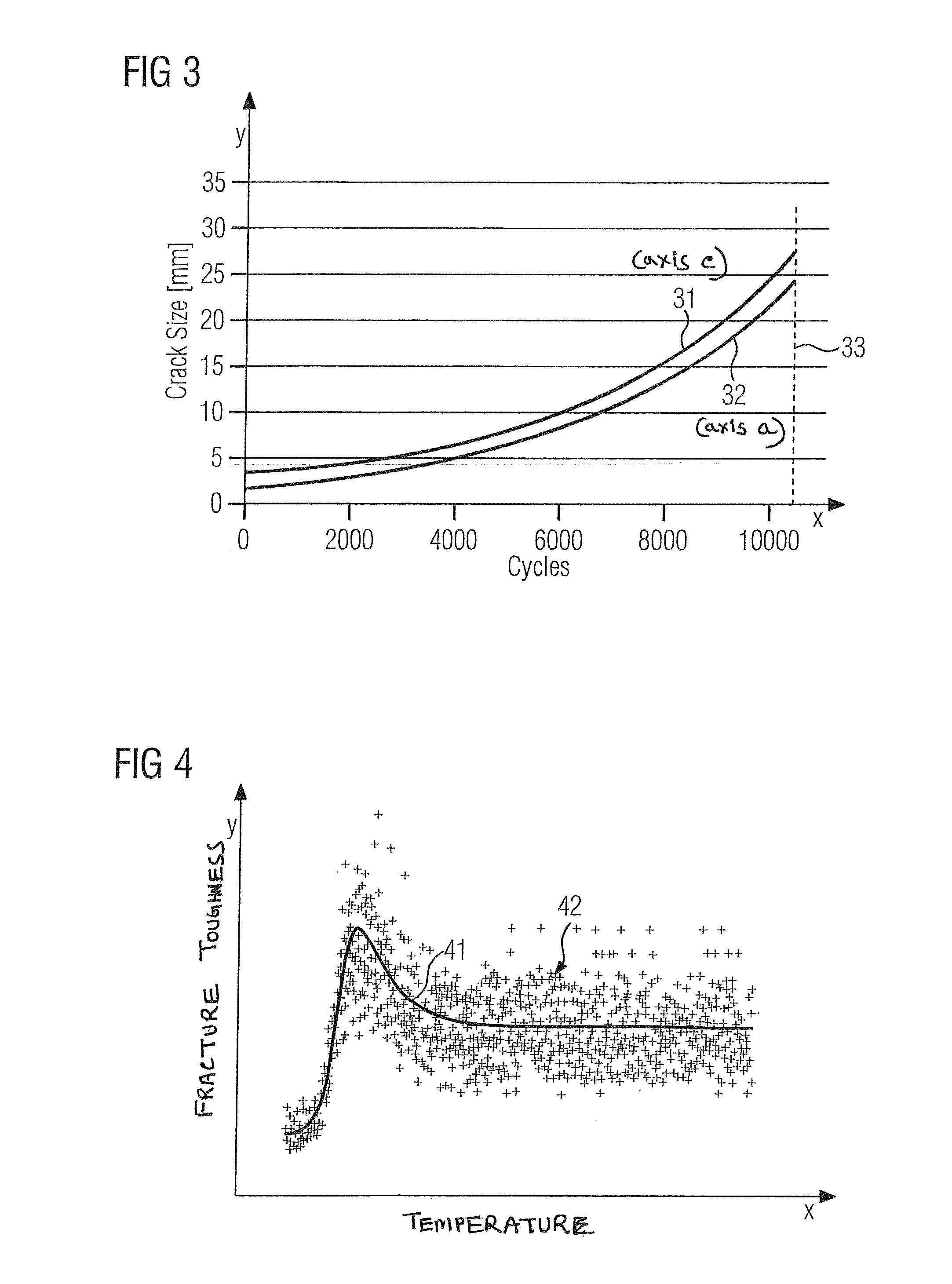Method and system for probabilistic fatigue crack life estimation
a probabilistic estimation and crack life technology, applied in mechanical measurement arrangements, semiconductor/solid-state device testing/measurement, instruments, etc., can solve the problems of limiting the life of components, fatigue crack growth (fcg) under cyclic loading is oftentimes the life limiting mechanism of components, and small cracks are typically nucleated, so as to achieve significant reduction in the calculation time of stable cracks.
- Summary
- Abstract
- Description
- Claims
- Application Information
AI Technical Summary
Benefits of technology
Problems solved by technology
Method used
Image
Examples
Embodiment Construction
[0055]The embodiments illustrated below provide a fatigue crack life estimation of a component based on direct simulation probabilistic fracture mechanics. The proposed method performs a large number of individual fracture mechanics simulations to determine the life-distribution and thus the probability of failure PoF(N) of a component. The illustrated embodiments use a Monte-Carlo Methodology which is defined by a large number of samples or representations S (typically, S is of the order of millions to trillions), each of which represents one possible component condition. Each condition of a representation is defined by drawing values from material distributions and flaw-size distribution. A fracture mechanics analysis (for example, LEFM or its extensions such as IPZE or FAD) is carried out for each of these large number of representations, that determines whether or not each of these representations fails after a given number of cycles N, based on a calculation of crack growth. F...
PUM
 Login to View More
Login to View More Abstract
Description
Claims
Application Information
 Login to View More
Login to View More - R&D
- Intellectual Property
- Life Sciences
- Materials
- Tech Scout
- Unparalleled Data Quality
- Higher Quality Content
- 60% Fewer Hallucinations
Browse by: Latest US Patents, China's latest patents, Technical Efficacy Thesaurus, Application Domain, Technology Topic, Popular Technical Reports.
© 2025 PatSnap. All rights reserved.Legal|Privacy policy|Modern Slavery Act Transparency Statement|Sitemap|About US| Contact US: help@patsnap.com



